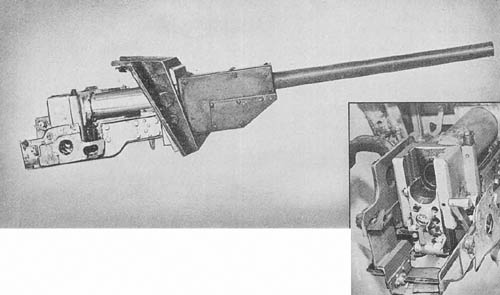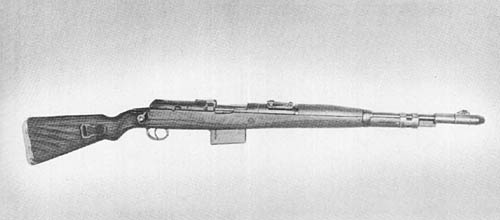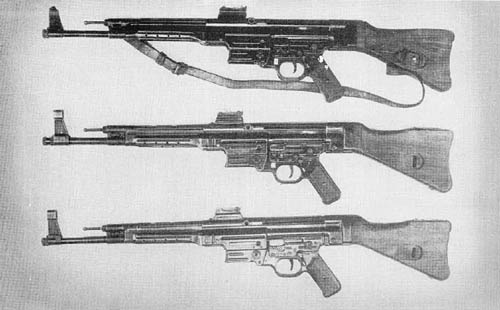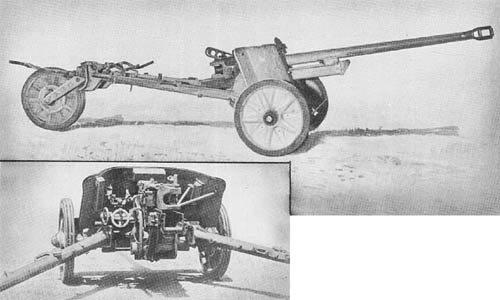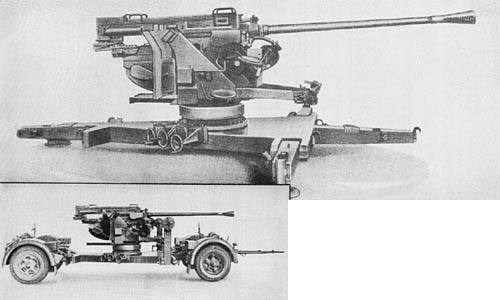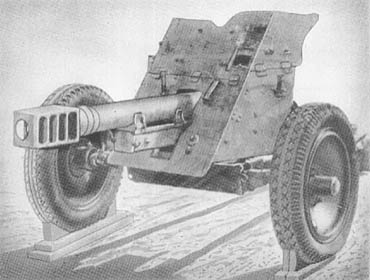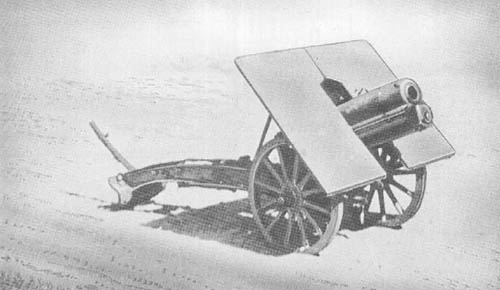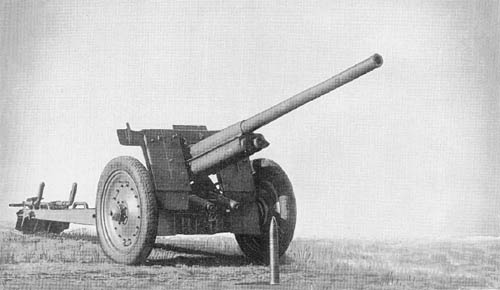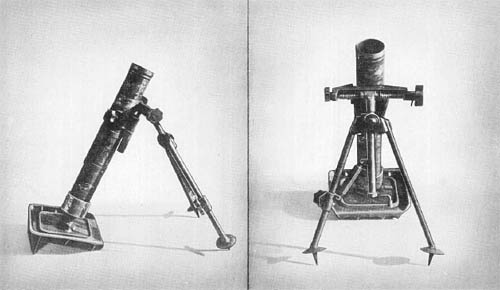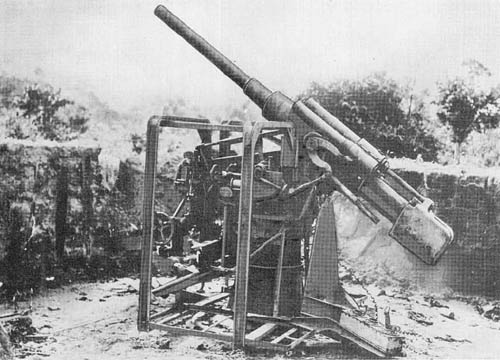
This weapon which was recovered at Rangoon has a barrel of monobloc construction, machined to take a rectangular breech ring. A large threaded brass locking collar holds the breech ring in position. Rifling is right hand twist. The breech mechanism is semi-automatic of the vertical sliding type; the firing mechanism is a percussion type.
The piece fits in a sleeve type cradle to which are fitted the buffer cylinder, the recuperator cylinders, the trunnions, and the elevating arc. The recoil mechanism is hydropneumatic. Two recuperator cylinders are located one on each side of the recoil cylinder which is centrally mounted above the piece. The elevating arc is mounted under the piece offset slightly to the left. It is operated by a handwheel and crank on the left of the gun, and like the traversing handwheel, on the right of the gun, is forward of the trunnions.
The upper carriage consists of two side plates joined by three cross members, and revolves on a ball race fitted to its base. A pintle, bolted to the center of the base, extends down into a bearing in the pedestal. Three brackets are set at regular intervals around the upper carriage to prevent lateral play. The pedestal is a single cast truncated cone, reinforced internally and externally by six ribs. Twelve bolts secure it to a circular steel base plate.
Follow-the-pointer dials are provided for azimuth, elevation, and fuze setting. Three mechanical fuze-setters are also provided. Some of the guns examined were equipped with open sights of very primitive design.
SPECIFICATIONS
| Caliber | 88 mm (3.5 ins.) | |
| Weight (complete) | 14,560 lbs. | |
| Weight of cradle | 1,256 lbs. | |
| Weight of carriage (including elevating & traversing mech.) | 4,894 lbs. | |
| Length (traveling position) | ||
| Length of barrel assembly | 255.8 ins. | |
| Height (traveling position) | ||
| Height (firing position) | ||
| Width (overall) | ||
| Length of bore | ||
| No. of grooves | 32 | |
| Width of grooves | ||
| Depth of grooves | 1 mm | |
| Width of lands | ||
| Muzzle velocity (shell) | 2,650 f/s | |
| Max. range (horizontal) | ||
| Max. range (vertical) | ||
| Rate of fire | ||
| Traverse | 360° | |
| Elevation | 80° | |
| Depression | 7° | |
| Length of recoil | (approx.) 14-15 ins. | |
| Ammunition | H.E. | |
| Wt. of projectile (H.E.) | (approx.) 18 lbs. |
Japanese: p. 114.2 (August 1, 1945)
